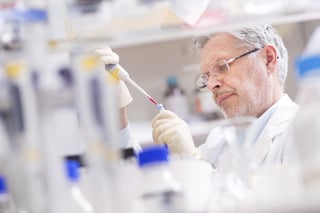 A California-based middle market, specialty pharmaceutical R&D company engaged in the development, manufacturing and commercialization of generic and proprietary injectable and inhalation drug products.
A California-based middle market, specialty pharmaceutical R&D company engaged in the development, manufacturing and commercialization of generic and proprietary injectable and inhalation drug products. This private company has grown rapidly over the past several years with annual revenues of approximately $125 million.
The company has four main research facilities (three in the U.S. and one in India). The primary goals of the company were to expand and strengthen its research and development expertise in the injectable and inhalation markets. An emphasis was placed on developing products for large patient populations with high technical barriers to enter the marketplace.
Much of its pharmaceutical R&D focus is on developing technical expertise to:
- Create products requiring an active pharmaceutical ingredient that is challenging and difficult to manufacture
- Design a new and complex drug manufacturing process
- Improve new drug formulations to provide better drug performance
- Establish new proprietary drug delivery systems and technology
The Company’s Potential To Capture R&D Tax Credits
Since most of this company’s R&D activities are conducted in the U.S. and California, it’s eligible for both the federal and California R&D tax credits.The company employs over 150 scientists and other technical personnel dedicated to research and development activities, with expertise in the following areas:
- Pharmaceutical formulation
- Process development
- Toxicity studies
- Analytical and physical chemistry
- Drug delivery systems
- Device development
- Clinical research studies
With all of these activities, the company incurs tens of millions of dollars a year in pharmaceutical R&D expenses, including employee wages, supply expenses and contract research payments.
CTI’s Solution To Maximize R&D Tax Benefits
For this pharmaceutical company, an R&D tax credit study was conducted, and qualified activities and related R&D expenses were analyzed and identified as eligible qualified expenses.
Key departments that incurred most of the research expenses were the chemistry, pharmacology, research, laboratory and clinical departments. For R&D wages, employees’ activities were evaluated to determine R&D expenses for anyone who was performing “direct research,” “direct supervision” or “direct support” activities.
Another significant R&D expense was material supply costs (such as compounds, ingredients and experimental formulations) that were reviewed and analyzed for qualification purposes.
Lastly, this company also incurred contract research expenses since the company would contract with outside test laboratories and clinical research organizations to help manage and conduct Phase 1 and 2 clinical trials.
The Result: $3.5 Million In Captured R&D Tax Credits
After the detailed analysis was conducted and all of the research activities were fully documented, the company incurred approximately $25 million in qualified research expenses and received combined annual R&D tax credits of $3.5 million.The R&D tax credit is a complex area of tax compliance, so pharmaceutical companies should be aware of all the rules and regulations that affect their credit benefits. When in doubt, R&D tax credit subject matter experts can help your company maximize and sustain these substantial, business-boosting benefits.
Ready to maximize R&D tax credits for your qualifying research expenses? Download your complimentary, educational guide below.



